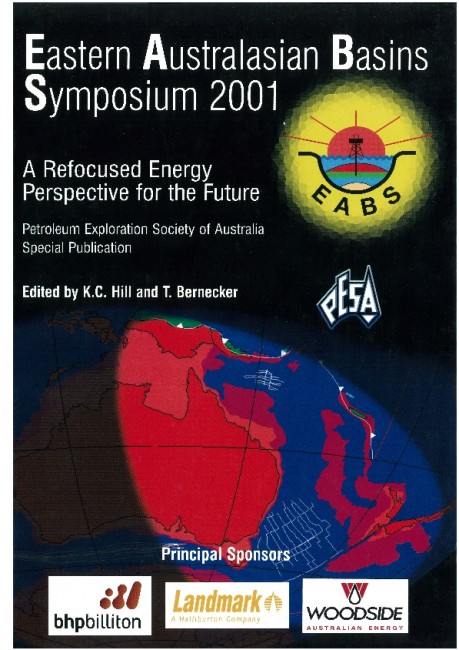Publication Name: Eastern Australian Basins Symposium 2001
Authors: G-P. Bai, P.J. Hamilton, P.J. Eadington and J.B. Keene
Date Published: November 2001
Number of Pages: 34
Reference Type: Magazine Article
Abstract:
A petrographic, isotopic and fluid inclusion investigation of sandstones from the Permian Wilton Formation and Triassic Narrabeen Group in the Sydney Basin was undertaken in order to document the fluid flow history of pore waters and hydrocarbons.Fluid inclusion temperatures and stable isotope data for diagenetic cements have been used to track the hydrologic regime during burial. A more open hydrologic regime appears to have persisted for longer in the Narrabeen Group with diagenesis influenced by sustained replenishment of meteoric waters at burial temperatures of up to -75?C. This process, as well as the generally more lithic and reactive compositions of the Narrabeen Group, resulted in more complex diagenetic histories than in the Wilton Formation. Thereafter, quartz, clay and carbonate cements crystallized in both units in a closed palaeohydrologic system that
continued through to maximum burial. Fluorescence on diagenetic clays and in fluid inclusions in quartz overgrowths indicate some migration of oil into these sandstones had occurred during this time.
K-Ar ages for authigenic illite from Narrabeen Group samples range from 146 to 90.5 Ma and constrain the earliest time at which illite formation ceased. The ages decrease from west to east suggesting that illitisation persisted to greater depths and higher temperatures to the east. This is consistent with the observation that organic maturity increases eastwards.
Fluid inclusion temperatures indicate that formation temperatures were 80 - 11 ooc higher in the past. This is due to a combination of l ,500 - 2, I 00 m of eroded section and a heat flow that was rising and reached a
peak in mid-Cretaceous time. The erosion occurred subsequent to major uplift at -100 Ma associated with Tasman Sea rifting and also resulted in the loss of most of any accumulated hydrocarbons. Other petrologic
studies of the Sydney Basin indicate that the final diagenetic event took place after basin uplift with precipitation of dawsonite. This was probably associated with high concentrations of magmatic CO. during the Tertiary.


